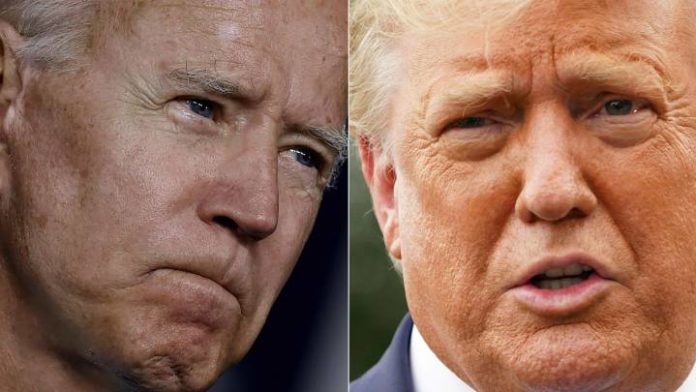November is here and stocks are up. And for once, tech isn’t leading the pack.
The Dow and S&P have both risen over 1.20% as of noon. The Nasdaq Composite, meanwhile, idles for a 0.30% gain.
And with Election Day less than 24-hours away, it seems nearly anything is possible.
Including a rally “re-boot.”
“If you’re really short, you’re really betting that everything has to go wrong at this point,” explained “Mad Money” host Jim Cramer.
“[Stocks] really got oversold last week and it’s entirely possible that we elect someone tomorrow.”
Cramer’s, of course, referring to the chances of a contested election. If Trump loses, analysts say he’s unlikely to go down without a fight. Election tampering has been a widely discussed issue by both candidates in recent months.
Trump believes fraudulent mail-in ballots might ultimately cost him the election. Biden says requiring verification of those mail-in votes stinks of voter suppression, despite a long list of occurrences where votes were found discarded illegally.
A case could certainly be made against the mail-in ballots if they tilt toward Biden. Similarly, if Trump wins, Biden might claim that the GOP canceled out perfectly good votes.
Plenty of uncertainty remains either way.
“The world is still largely in a holding pattern as investors await clarity on the U.S. election,” said Vital Knowledge founder Adam Crisafulli in a note.
“The world will likely be a lot clearer in just a few days thanks to the election being over, stimulus talks resuming in Washington, [and] further central bank support.”
In his comments, Crisafulli hit on perhaps the most important market influence of all:
Central banks.
Wall Street’s greatest fear is a Biden win coupled with a red Congress, as it would likely result in a reduced stimulus package. A Trump win and a blue Congress is expected to produce a similar outcome.
Short-term, that could pose some problems for bulls.
But longer-term, it might not matter. Because the market’s biggest supporter – the Federal Reserve – will end up stepping in as usual.
And this prediction isn’t purely based on speculation; over the last century, stocks have loved a divided government.
During the last six “blue waves” dating back to FDR, the S&P has risen 56% on average. The last three “red waves” over that same period, meanwhile, have seen the index rise 35% on average.
But the best S&P performance of all has come when the president was at odds with Congress. During those seven periods of divided government, the S&P rose (again, on average) 60%.
Did this happen by pure coincidence? Perhaps, but the more likely explanation has to do with how the Fed has handled political gridlock. Whenever legislators and POTUS can’t come to terms, the Fed takes matters into its own hands, inducing quantitative easing (QE) and creating liquidity.
The market likes liquidity, and it likes QE even more. Economic growth in the U.S. stagnated following the 2008 Financial Crisis, but stocks kept rising as the Fed loaded up on debt.
And since March, the Fed’s balance sheet has ballooned in yet another unprecedented liquidity explosion.
If Washington can’t produce a satisfactory stimulus bill in the coming weeks, medium-to-long-term bulls won’t need to worry. The Fed’s going to save the day via another QE injection if necessary, which seems to always do the trick.
Eventually, the Fed’s luck will run out. There’s no reason to truly panic until it does.
Not yet, at least.








